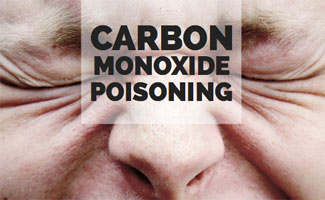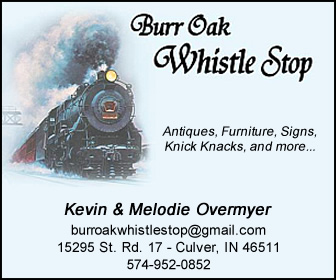 Staying warm in cold weather can be a challenge, especially if ice or snow storms cut power to homes. If it becomes necessary to use alternate heat sources, Hoosiers need to know how to protect themselves from carbon monoxide poisoning.
Staying warm in cold weather can be a challenge, especially if ice or snow storms cut power to homes. If it becomes necessary to use alternate heat sources, Hoosiers need to know how to protect themselves from carbon monoxide poisoning.
Carbon monoxide, sometimes referred to as CO, is an odorless, colorless gas that can accumulate in enclosed spaces and cause sudden illness and death if inhaled. It is often known as the silent killer because people can be rendered unconscious before realizing something is wrong. Carbon monoxide is typically associated with heating sources such as small gasoline engines, stoves, generators, lanterns, gas ranges or by burning charcoal and wood.
According to the Centers for Disease Control and Prevention (CDC), more than 400 Americans die and more than 20,000 visit the emergency room each year due to unintentional carbon monoxide poisoning.
“It’s important to stay warm during the winter, but Hoosiers need to be smart about their choices to prevent a tragedy,” said State Health Commissioner Jerome Adams, M.D., M.P.H. “Regularly maintaining furnaces and knowing the proper way to use generators and other heating sources can prevent carbon monoxide poisoning and be the difference between life and death.”
In order to prevent carbon monoxide poisoning:
- Have your heating system, water heater and any other gas-, oil- or coal-burning appliances serviced by a qualified technician every year.
- Never use generators, grills, camp stoves or other devices powered by gasoline, propane, natural gas or charcoal indoors.
- Never allow your car to idle within a closed garage.
- Have at least one working carbon monoxide detector in your home. These low-cost devices can be found at local hardware stores. Replace the detector’s batteries twice each year, at the same time you replace smoke-detector batteries.
- Use caution when heating with propane appliances, older wall or floor gas furnaces and fireplaces.
- Place emergency generators outdoors away from windows and doors to prevent fumes from entering the home.
Carbon monoxide from combustion sources can build up suddenly or over long periods of time in enclosed or semi-enclosed spaces and can affect people and animals. Common symptoms of carbon monoxide poisoning include headache, dizziness, weakness, upset stomach, vomiting, chest pain and confusion. People who are asleep or intoxicated may be poisoned and not experience any of these symptoms.
Anyone experiencing these symptoms should:
- Get fresh air immediately.
- Open windows and doors for more ventilation, turn off any combustion appliances and leave the house.
- Call 911.
- Before turning your fuel-burning appliance back on, make sure a qualified service technician checks and approves its use.
To learn more about carbon monoxide, visit the CDC’s carbon monoxide poisoning page at http://www.cdc.gov/co/default.htm. For more information about the Indiana State Department of Health, visit www.StateHealth.in.gov. Follow the Indiana State Department of Health on Twitter at @StateHealthIN and on Facebook at www.facebook.com/isdh1.














